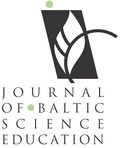SELF-EFFICACY, AFFECTIVE WELL-BEING, AND INTENT-TO-LEAVE BY SCIENCE AND MATHEMATICS TEACHERS: A STRUCTURAL EQUATION MODEL
| Title | SELF-EFFICACY, AFFECTIVE WELL-BEING, AND INTENT-TO-LEAVE BY SCIENCE AND MATHEMATICS TEACHERS: A STRUCTURAL EQUATION MODEL |
| Publication Type | Journal Article |
| Year of Publication | 2021 |
| Authors | Karakus, M, Ersozlu, Z, Usak, M, Ocean, J |
| Journal | Journal of Baltic Science Education |
| Volume | 20 |
| Issue | 2 |
| Start Page | 237-251 |
| Pagination | Continuous |
| Date Published | April/2021 |
| Type of Article | Original article |
| ISSN | 1648-3898 |
| Other Numbers | E-ISSN 2538-7138 |
| Keywords | intent-to-leave, science and mathematics teachers, self-efficacy, wellbeing |
| Abstract | The current research aims to explore the impact of Science and Mathematics teachers’ self-efficacy on their intentions to leave through the mediating effects of their affective wellbeing (stress, burnout, and depression). Data were collected from 329 teachers of Science and Mathematics who were selected randomly with a clustered sampling method from 232 secondary schools in South and East Anatolia, Turkey. The structural equation model that yielded the best fit indicated that as teachers’ self-efficacy levels increase, their stress, burnout, depression, and intent-to-leave levels decrease. Teachers with high self-efficacy are less likely to develop intention-to-leave because of their positive affective well-being indicators. Results suggest that maths and science teachers who have optimistic beliefs in their capabilities can more easily cope with the stressors at work and have better affective well-being, and consequently, a lower level of intention-to-leave. The results provide educational leaders with insights as to how better to retain qualified Science and Mathematics teachers. |
| URL | http://oaji.net/articles/2021/987-1616865904.pdf |
| DOI | 10.33225/jbse/21.20.237 |
| Refereed Designation | Refereed |
| Full Text |
